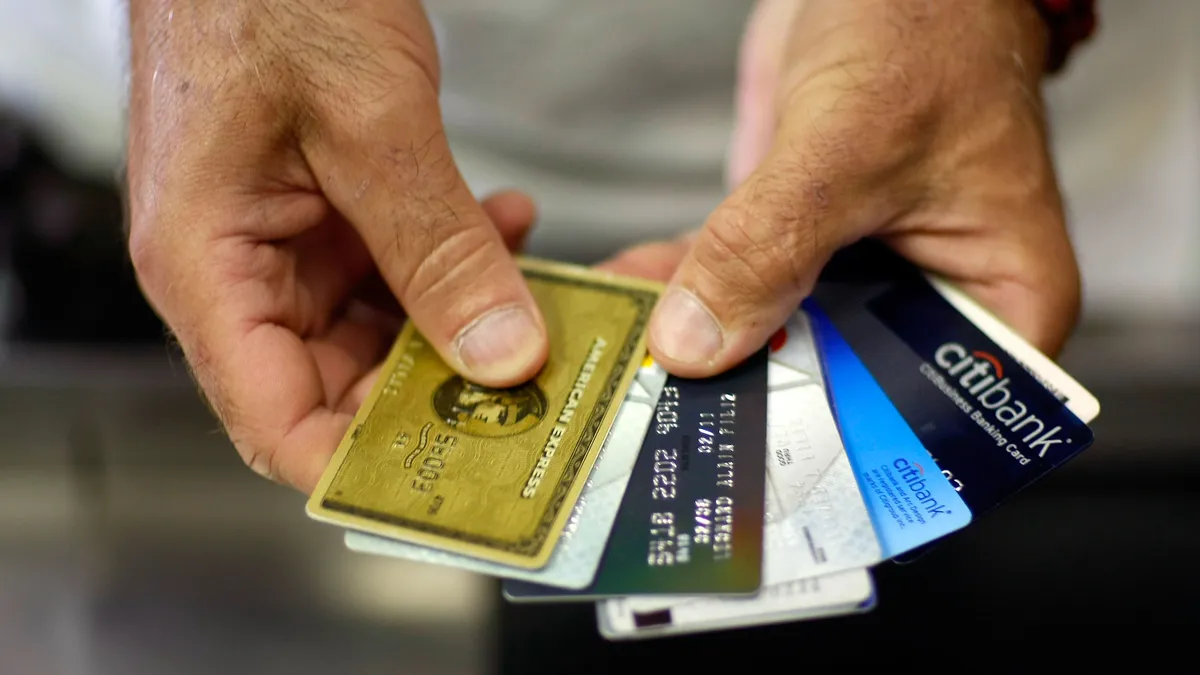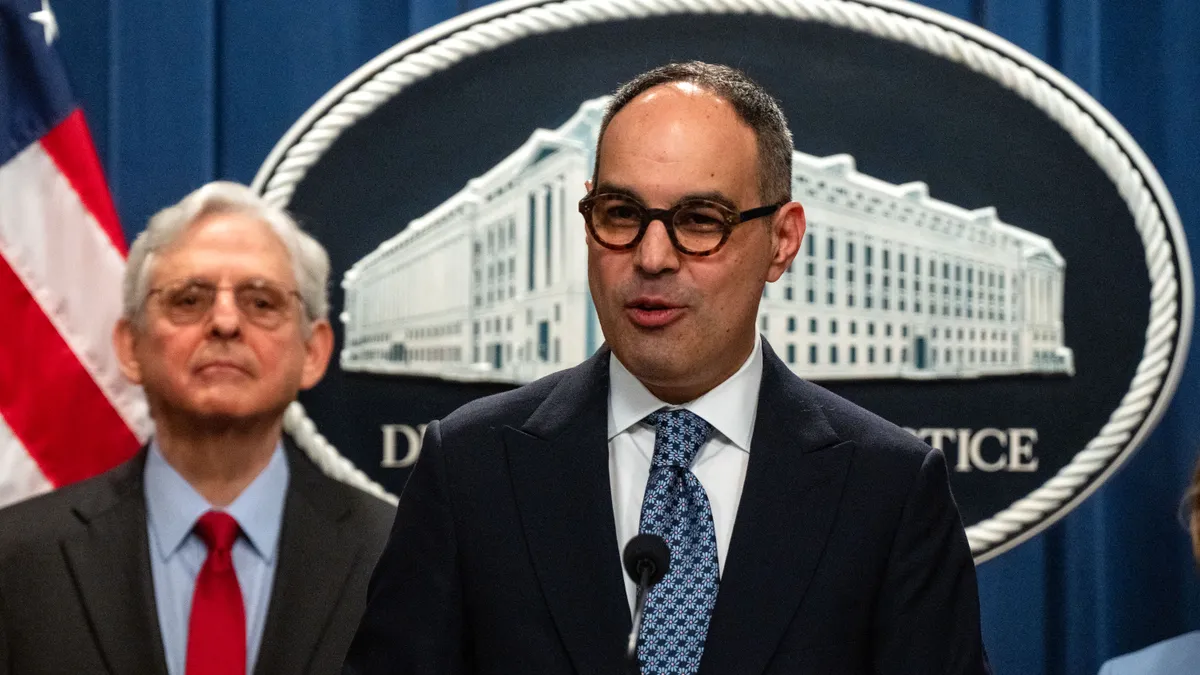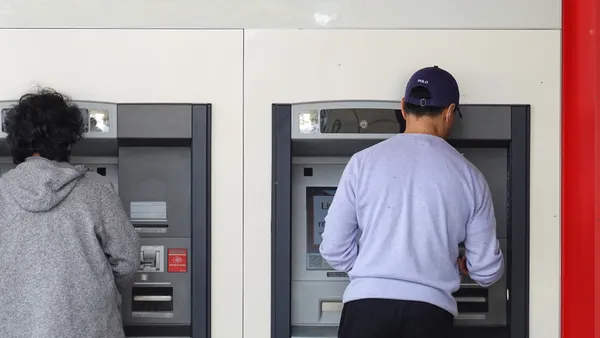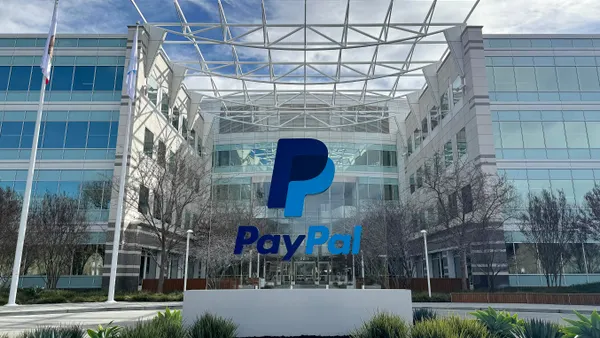Dive Brief:
- Consumer credit card debt totaled $986 billion in the first quarter, remaining unchanged from the fourth quarter of last year, according to the quarterly survey released Monday by the Federal Reserve Bank of New York’s Center for Microeconomic Data.
- That bucked “the typical trend of balance declines in first quarters,” the New York Fed’s report said.
- U.S. households added $148 billion in debt in the quarter, bringing total household debt to a record $17.05 trillion, the New York Fed said. Balances are now $2.9 trillion higher than they were just prior to the COVID-19 pandemic.
Dive Insight:
Stubborn inflation and higher interest rates have plagued consumers for months, leading them to lean more on credit cards and add to their balances. First-quarter credit card balances jumped 17% over the same period last year.
In the fourth quarter of last year, credit card debt surpassed pre-pandemic levels, the New York Fed said. After robust growth in card balances that quarter, no change the following quarter is notable, according to Ted Rossman, Bankrate senior industry analyst.
“Normally, credit card balances fall from Q4 to Q1 as the dust settles on the holiday shopping season and consumers prioritize debt payoff as a New Year’s resolution,” Rossman said in an emailed statement Monday. “In fact, this is the only time since the New York Fed started tracking these figures in 2003 that credit card balances did not fall from Q4 to Q1.”
Consumer credit metrics, including delinquency and charge-off rates, have been edging closer to pre-pandemic levels. A charge-off refers to a debt the lender has written off as a loss. Card company executives have indicated they’re watching the job market closely, as a rising unemployment rate could lead credit metrics to slip further.
Additionally, the resumption of federal student loan payments in September or October could act as a headwind to borrowers and card companies, Bank of America Global Research analysts wrote in a Tuesday note to investor clients. “The resumption of a monthly obligation that has been suspended for three+ years could pressure consumer finances and weaken credit performance on other loans (e.g., credit card, personal loans),” analysts wrote. “We think investors will need to closely monitor consumer response to payments resuming and parse monthly credit data for signs of weakness.”
As consumers add to their debt totals, the Fed noted Monday the portion of debt classified as delinquent rose for most types of debt during the quarter. The credit card delinquency transition rate rose by 0.6 percentage points, the New York Fed noted.
Among card issuers, Discover Financial Services reported Friday its April net charge-off rate ticked up to 3.56%, from 3.13% in March, according to a filing with the Securities and Exchange Commission. Its delinquency rate for April was 2.75%, compared to 2.76% in March.
At Synchrony Financial, net charge-offs in April ticked up to 4.6%, from 4.5% in March, according to a Monday filing with the SEC. That card company reported its delinquency rate dipped slightly, to 3.7% in April, from 3.8% in March.
American Express reported Monday its April net write-off rate dipped slightly, to 1.5%, from 1.7% in March, and its delinquency rate remained 1.1%, according to a Monday filing with the SEC.












